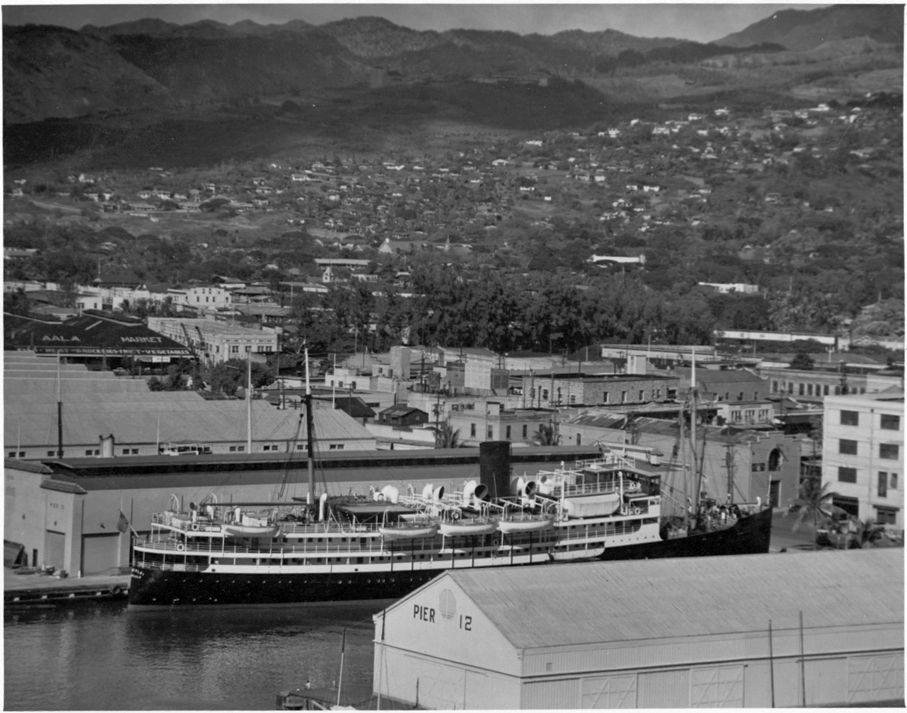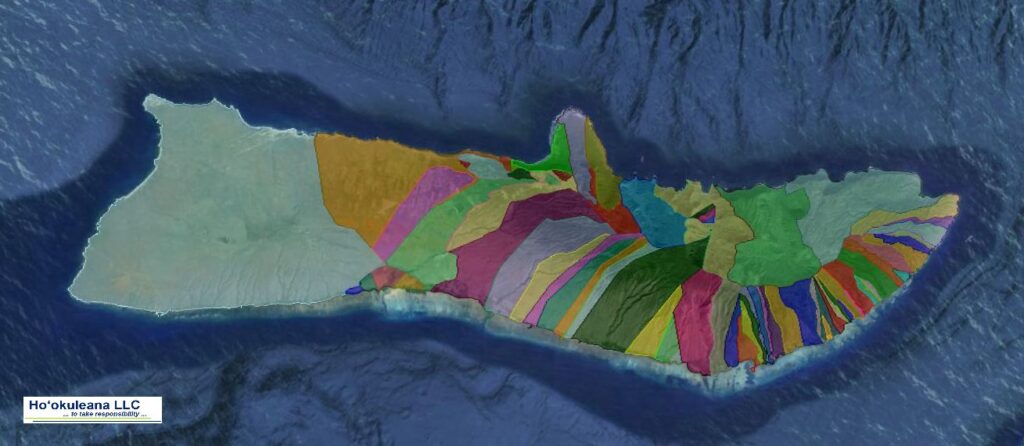A couple newspaper accounts of the impacts of the August 9, 1871 hurricane (estimated to be category 3) and its impact in Kohala:
“DD Baldwin (plantation manager) writes: ‘On Wednesday of last week a fearful tornado swept through the district, spreading desolation and ruin in its track, demolishing Mr. Wright’s mill building and a large portion of the thatched houses in the district; throwing down our flume; uprooting large trees, and prostrating our cane fields.’
‘The wind commenced about 6 o’clock A.M. from the North, and rapidly rotating to the West and South, and increasing in fury, reached its climax about 9 AM when it suddenly lulled into a calm fearfully in contrast with the rain the storm had so rapidly wrought.”
“The wind was accompanied with torrents of rain which raised the streams to an unprecedented height and swept away fences and trees.’”
‘We had as usual commenced our morning grinding when the rain drove in under our boilers, extinguished our fires and drenched our whole mill building with a deluge of water and it was with the utmost difficulty that our sugar on hand in kegs and the bins were saved.’”
“‘Our loss in juice on hand was considerable. The fall of our steam chimney of course prevents grinding now, but we are puting up a new one, and shall commence again next week. The portion of our flume prostrated is In our cane fields, and we continue to run down wood to a point near the cane.”
“But by far the greatest damage is to our cane fields, more particularly those belonging to next years crop, which I fear will seriously effect my estimates.’”
“The Rev. Mr. Bond relates: ‘The storm commenced about 6 AM and increased at 10 AM The greatest fury was say from 9 to 9½ or 9¾, torrents of rain came with it. The district is swept as with the besom of destruction.’”
“‘About 150 houses were blown down, trees in ravines torn up like wisps of grass, cane stripped and torn, as never before and even the grass forced down and made to cleave to the earth.’”
“‘The main houses on the plantation, though flooded, remain in position. Cooper’s shop and several of the people’s houses moved from 2 to 10 feet off their foundations. The damage is variously estimated at $1,000 to $10,000. I should say $5,000 is a fair estimate.’”
“‘In our garden there is scarcely a whole tree of any kind remaining. A mango tree 15 inches in diameter was snapped as a pipe stem, just above the surface of the ground. Old solid kukui trees which had stood the storms of a score of years were torn up and pitched about like chaff.’”
“‘Dr. Wright’s mill and sugar house, the trash and dwelling house for manager, or head man, were all strewn over the ground. We were and are most thankful that the storm came in the daytime, and also that it was limited in its duration. These are the large drops of mercy mingled in the cup.’”
“The number of houses destroyed at Waipio, we understand to have been 27. At Waimea but little damage was done except to the road between that place and Kawaihae which we are informed, was seriously damaged in places by the torrents of water.”
“Other portions of Hawaii seem to have escaped the injurious effects of the storm. At Hilo a strong wind blew during the day, and in the districts of Kona and Kau a vast amount of rain fell without wind.”
“The storm seems, so far as we can judge, to have been a cyclone, moving from SE to NW its most destructive force having been felt in a diameter of from 150 to 200 miles.”
“As the China steamer from San Francisco would probably have been somewhere to the NW of these islands at the time of the storm, it is not improbable that we may hear of her encountering the gale.” (Hawaiians Gazette, August 23, 1871)
“The Storm on Hawaii. All accounts agree that the late storm was more severe in Kohala than elsewhere on the Islands. One hundred and twenty-two houses are reported as blown down in that district, and twenty-eight in Waipio. and some houses moved eight or ten feet from the foundations.”
“The plantations of Dr. Wight and of the Kohala Sugar Co., have suffered severely in buildings and growing crops.”
“The entire damage throughout Maui and Hawaii resulting from this gale, has been roughly estimated at $200,000 ; and we do not consider this as too high, taking into account the present actual losses together with the prospective decrease in produce.”
“Hilo and Kona appear to have escaped the wind on this occasion, and enjoyed copious rains.” (Pacific Commercial Advertiser, August 26, 1871)



















































